Hamilton is unique in its use of complex rhyming lyrics. Joel Eastwood and Erik Hinton for the Wall Street Journal algorithmically break down the lyrics into sounds and then clusters into rhyme families. I haven’t seen the musical, but this makes me want to.
-
The Migrations in Motion map, by Dan Majka from the The Nature Conservancy, shows modeled animal migrations in North and South America.
Researchers from University of Washington and The Nature Conservancy modeled potential habitat for 2954 species using climate change projections and the climatic needs of each species.
Using flow models from electronic circuit theory, they plotted movement routes for each species, connecting current habitats with their projected locations under climate change.
See also Fernanda Viegas and Martin Wattenberg’s wind map and Cameron Beccario’s globe, which were the inspiration for this one.
-
Make a Moving Bubbles Chart to Show Clustering and Distributions
Use a force-directed graph to form a collection of bubbles and move them around based on data.
-
One more Olympics-related piece for the road. The New York Times used photo compositing to show a handful of critical moments for individual athletes. The above is the Laurie Hernandez’ dismount during the team event.
And, I can’t go without mentioning the Nike human chain commercial from six years years ago, which is the video version of this.
-
Sometimes you need a color scheme quick, and ColorBrewer is typically the de facto, but it has some limitations. You can’t just choose any color you want as a starting point, and there is a set number of color schemes. Colorgorical by Connor Gramazio on the other hand lets you set parameters and color ranges, and it spits out a scheme with perceptual differences.
The interface is a bit rough, but usable enough to get some nice colors.
-
Crime is up? Crime is down? It depends on who you ask and where. The Marshall Project analyzed violent crime trends over the past 40 years to show how things are moving across the country.
In the process, we were struck by the wide variation from community to community. To paraphrase an aphorism about politics, all crime is local. Each city has its own trends that depend on the characteristics of the city itself, the time frame, and the type of crime. In fact, the trends vary from neighborhood to neighborhood within cities; a recent study posited that 5 percent of city blocks account for 50 percent of the crime. That is why most Americans believe crime is worse, while significantly fewer believe it is worse where they live.
They eventually narrowed down trends to four main categories, across 68 cities.
Don’t see what you’re looking for. The data is available for download.
-
Keep track of the 214 days out of the year that are a national food or drink days.
-
Missed this one from last month. Stamen announced the release of a whole lot of new terrain map tiles for around the world. Four billion of them.
The original Terrain style only covered the United States. As part of a new Knight Foundation grant, we expanded Terrain to cover the entire world. The Knight grant also funded prototyping for some totally-different new terrain styles, so to avoid confusion we are calling the this reboot of the old style “Terrain Classic.”
I don’t know if I’ll get the chance to use these any time soon, but they sure are pretty to look at.
-
The Guardian covered the rankings for the women’s heptathlon, specifically how Nafissatou Thiam from Belgium pulled off a surprise gold.
The main chart is a variant of a parallel coordinates plot. However, the chart type, which is usually read left to right, is rotated for vertical reading, and instead of straight connecting lines, a path of right angles is used instead. Nice. [Thanks, Matthew]
-
Using a long-exposure photography technique, Xavi Bou captured bird flight patterns in his series Ornitographies.
Unlike other motion analysis which preceded it, Ornitographies moves away from the scientific approach of chronophotography used by photographers like Eadweard Muybridge and Etienne-Jules Marey.
The approach used by Xavi Bou to portray the scene is not invasive; moreover, it rejects the distant study, resulting in organic form images that stimulate the imagination.
-
The New York Times has been pulling from the vault for this year’s Olympics, adapting previous graphics to current results. If it ain’t broke, don’t fix it. With Usain Bolt making the 100-meter look entirely too easy, NYT compares his time to times from winners of Olympics past — all on the same track.
If you like that, be sure to check out the original video versions from 2012.
-
Datopolis is a board game by Ellen Broad and Jeni Tennison from the Open Data Institute, and as you might expect, it promotes the use of open data.
Datopolis is a board game about building things — services, websites, devices, apps and research — using closed and open data. It’s set in a town called Sheridan, which is gradually declining as shops close, teachers quit, hedgehogs go extinct and pollution rises. The tools that players build contribute to making Sheridan a healthier, wealthier, happier place to live.
Sounds good to me.
For a limited time, you can buy the game on Game Crafter. You can also download the components from GitHub and print them yourself, because it’s all openly licensed, fittingly.
-
As the Olympics are all about reaching peak physical potential, it shouldn’t surprise that a lot of races are close, but there’s been a good number of ties this year. The measurement system allows for precision up to the millionth of a second. So what gives? Timothy Burke for Deadspin provides the explanation.
In a 50 meter Olympic pool, at the current men’s world record 50m pace, a thousandth-of-a-second constitutes 2.39 millimeters of travel. FINA pool dimension regulations allow a tolerance of 3 centimeters in each lane, more than ten times that amount. Could you time swimmers to a thousandth-of-a-second? Sure, but you couldn’t guarantee the winning swimmer didn’t have a thousandth-of-a-second-shorter course to swim.
Always consider the bottlenecks.
-
Martin O’Leary made a Twitter bot, Uncharted Atlas, that posts automatically generated fantasy maps. Recently, he described how these maps are generated and how you can do it yourself, complete with a step-by-step clickety explanation and Python/JavaScript code for the backend.
-
When you have graphs to draw or statistical concepts to teach, you need your data and you need it now. You can look for a suitable dataset, or you can simulate a result, but that can be annoyingly tedious. DrawMyData by Robert Grant is a simple tool that lets you click an x-y plot to draw points, and then you can just download the the x-y coordinates as a CSV file.
Tools like this always seem kind of frivolous at first, but then you use it a few times and becomes indispensable. [via @albertocairo]
-
That Michael Phelps. He is a crazy man, in the best possible way. Derek Watkins and Larry Buchanan for the New York Times compare race times of young Michael Phelps against those of current Michael Phelps. The piece as a whole serves as a quick visual history of the legendary swimmer’s career, that we still get to watch more of (if I can figure out NBC’s broadcasting schedule, that is).
-
Sometimes I check Donald Trump’s Twitter feed, as many find themselves doing and quickly regretting. There’s definitely a certain style to some of the tweets. But there are also tweets that don’t seem so “sad!” David Robinson was curious if you can see this difference if you look at tweets sent from an iPhone and those sent from an Android phone.
There appears that you can. Angrier tweets tend to come from the Android and the less angrier ones tend to come from an iPhone. Do what you want with that information.
-
Gregor Aisch and Larry Buchanan for the New York Times visualized Olympic medal dominance with a streamgraph for each event. Time is on the horizontal axis, and each stack represents a country. The greater the height is at any point, the more medals the country won that year. Nice labels, too.
-
Here’s how common each household type is and was — and how the makeup compares to a few decades ago.
-
One of the best parts of the Olympics is watching an athlete from your country dominate the competition. Katie Ledecky is one of those athletes this year. Carlo Zapponi and Apple Chan Fardel for the Guardian provide a recap of Ledecky’s world record performance in the 400-meter freestyle. Typically these races are close, but last night Ledecky might as well have been in the pool by herself.

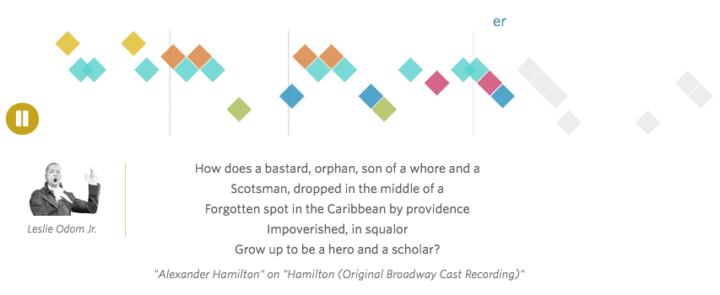
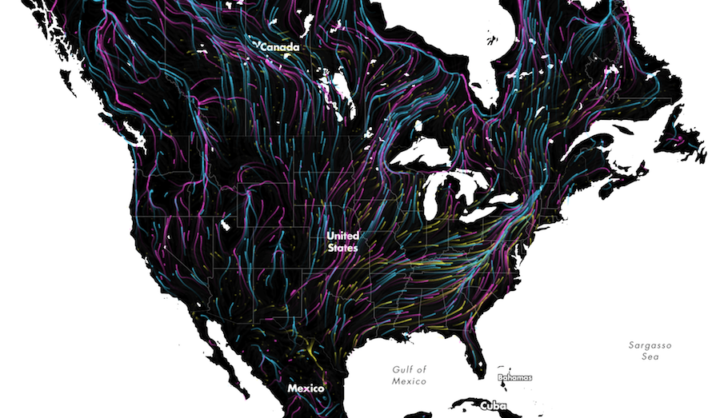
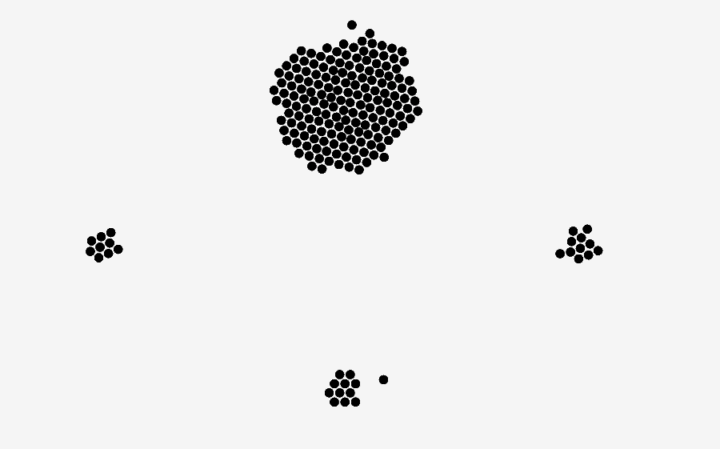

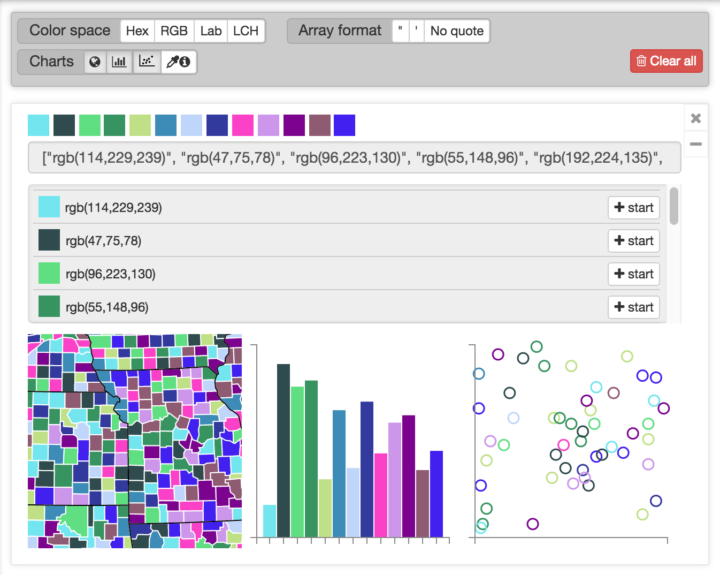
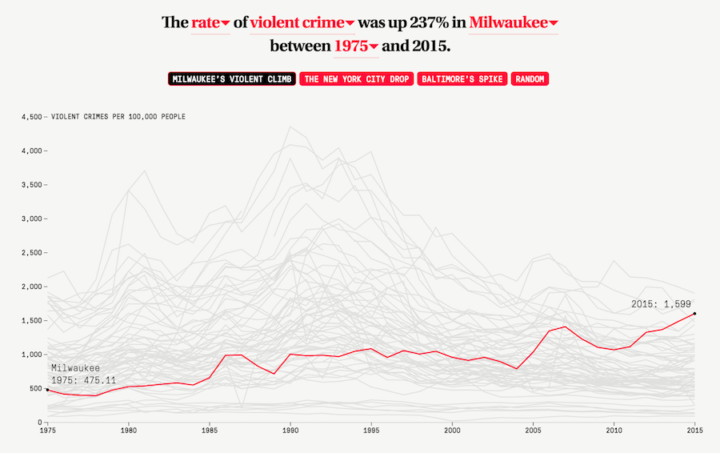


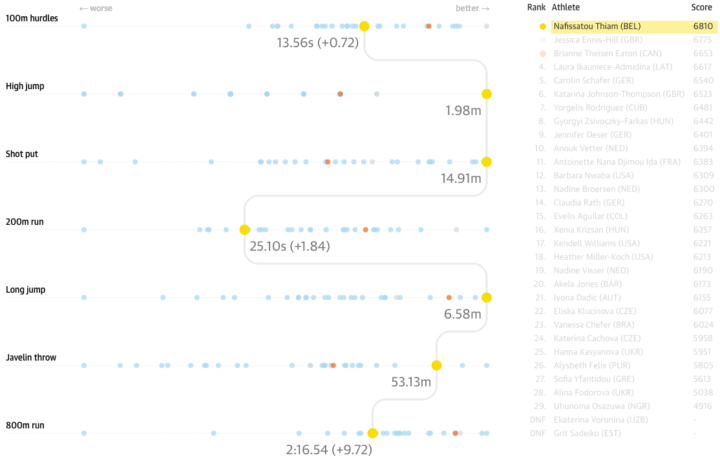

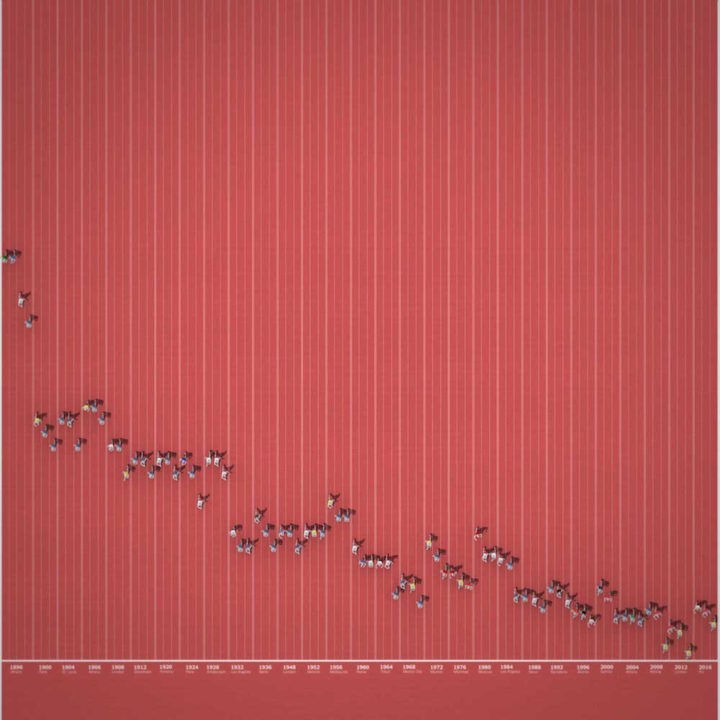
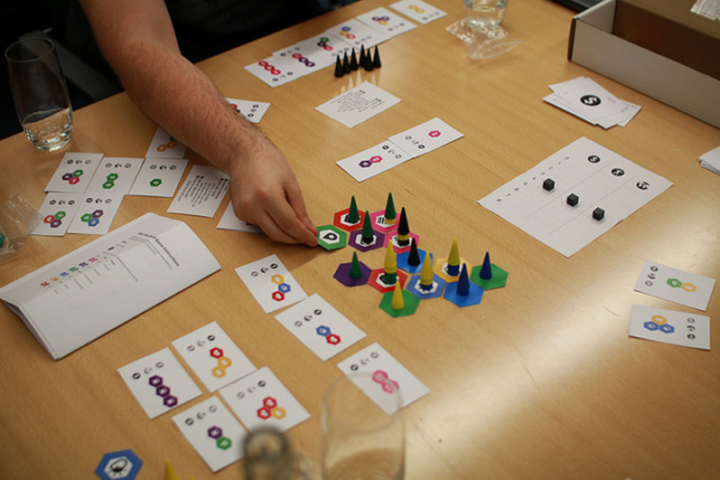
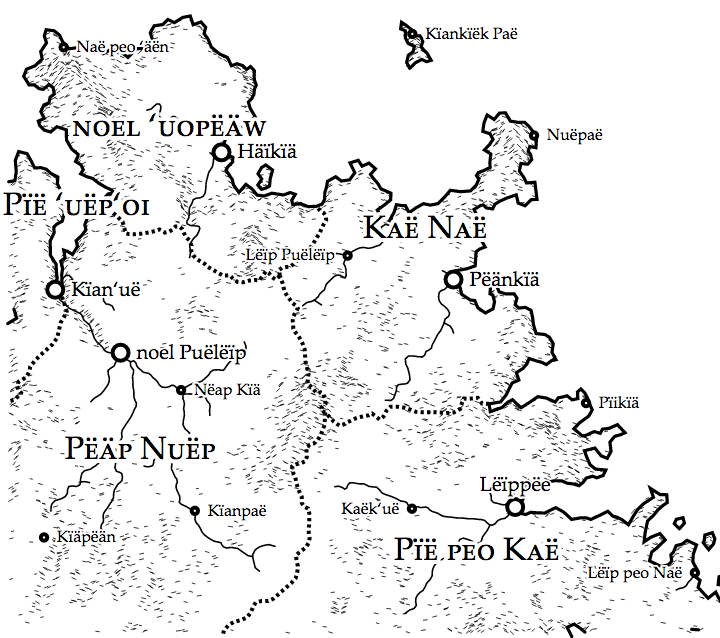
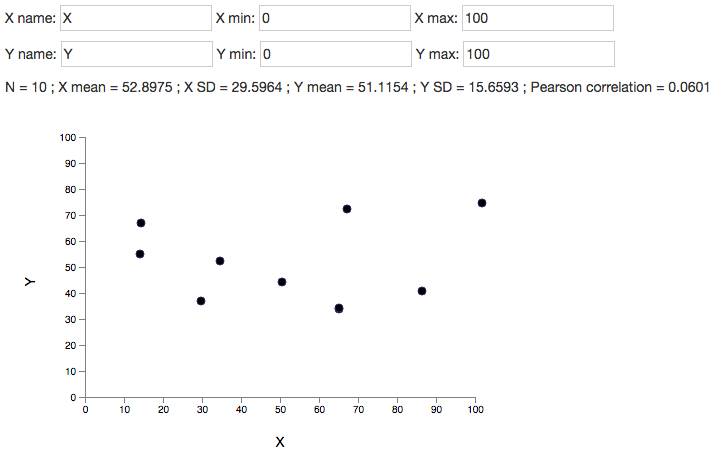
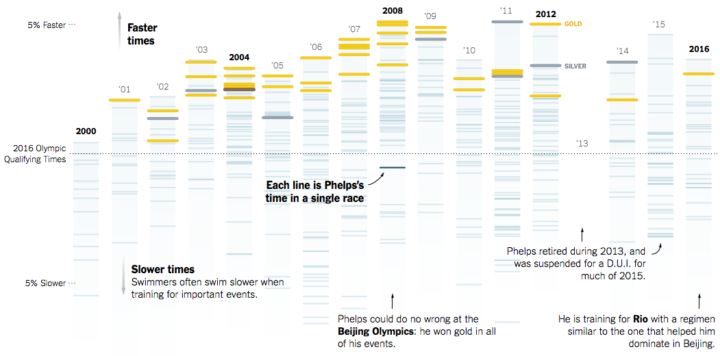

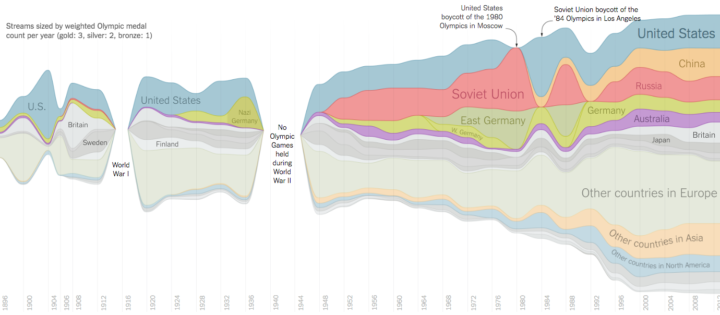

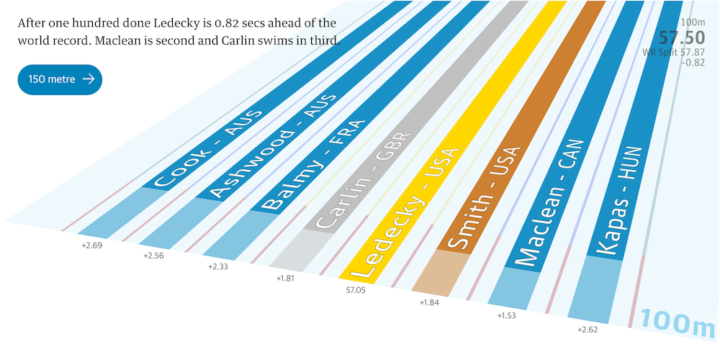
 Visualize This: The FlowingData Guide to Design, Visualization, and Statistics (2nd Edition)
Visualize This: The FlowingData Guide to Design, Visualization, and Statistics (2nd Edition)










